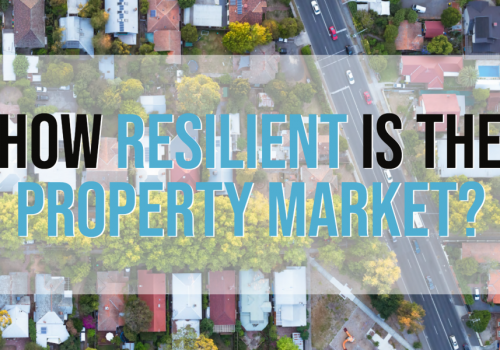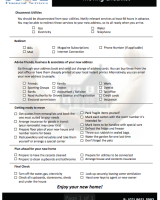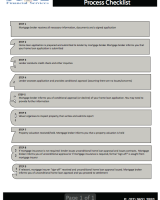Download Articles
Download Guides
Download Checklists
FAQs
How Much Can I Borrow?
How much you can borrow, also known as your borrowing capacity, will depend on how much of a deposit you have, your current income and what expense commitments you have. It will also vary from lender to lender.
Am I Eligible For The First Home Owners Grant?
The First Home Owner Grant (New Homes) scheme was established to assist eligible first home owners to purchase a new home or build their home by offering a grant. The grant amount is determined by the date of the eligible transaction. This is the date of the contract to purchase a new home or contract to build a home. For an owner builder, the eligible date is when the building work commences.
From 1 July 2017, the First Home Owner Grant Cap for new home purchases is $600,000; for a property where you enter into a contract to build, or are an owner builder the total value cannot exceed $750,000. For eligible transactions made on or after 1 January 2016, the grant amount is $10,000. For eligible transactions made between 1 October 2012 and 31 December 2015, the grant amount is $15,000.
Please check the office of state revenue website for other eligibility criteria.
www.revenue.nsw.gov.au/grants/fhog
How Much Do I Need To Save For A Deposit?
The amount you need as a deposit will depend on the type of home loan and the lender you select. Generally you will require a minimum of 5% of the property value.
How Much Do I Need To Set Aside For Stamp Duty?
Stamp duty is a tax levied on the purchase of a property. It is calculated according to the purchase price of the property and the state or territory the property is situated in.
First home buyers may be entitled to a waiver/reduction in stamp duty. Please visit the Office of State Revenue website for more information on grants; www.revenue.nsw.gov.au/grants
What Other Expenses Will I Need To Pay Besides Mortgage & Stamp Duties?
As a rough guide, you should budget for between 5-7% of the purchase price, in addition to your deposit, to cover fees and charges. While mortgage and stamp duties will make up the bulk of this 5-7%, the balance may include;
- Building and pest reports
- Valuation fees
- Lenders mortgage insurance (LMI)
- Solicitors fees
- Insurances
- Utility connection fees – phone/gas/electricity
- Council and water rates
- Removalist costs
How Do I Choose Which Home Is Best For Me?
When deciding on the area to live in, apart from considering proximity to family, friends and work commitments, you will obviously need to think about prices. Prices will vary greatly from suburb to suburb.
To help you decide on the right home for you, Scope Financial Services consultants can arrange for a free report on the area you are interested in.
What is a Standard Variable Loan?
Standard variable loans are Australia’s most popular type of home loan. The interest rate varies throughout the loan term. These loans generally offer excellent flexibility, low fees and often offer great features such as an offset facility, redraw facility, no limits on additional repayments and in most cases, no early pay-out penalties.
Advantages:
- Flexibility
- Lump-sum payments can be made without incurring a penalty.
- If interest rates fall, your repayments will fall.
- Often offer extra features.
Disadvantages:
- If interest rates rise your repayments will rise.
What is a Basic Variable Loan?
Basic variable loans typically offer lower interest rates and fewer features than the standard variable loans. You often have the option to pay for any additional feature required. Interest rates and repayments will vary throughout the loan term.
Advantages:
- Relatively low interest rate.
- Lower repayments.
Disadvantages:
- Many of these loans do not have the same features or flexibility as other variable loans.
What is a 'honeymoon' loan?
An introductory rate loan generally offers a guaranteed low rate for an initial period of time (usually 12 months) after which most will revert to the standard variable rate. The rate can be fixed or variable.
Advantages:
- Usually the lowest rates on the market.
- Some lenders provide offset accounts on these loans.
- Opportunity to reduce the principal quickly during the ‘honeymoon’ period.
Disadvantages:
- Payments will increase after initial introductory/’honeymoon’ period
Fixed Rate Loan
Under a fixed rate loan, the interest rate is fixed for a specified period, usually between one and five years. This loan gives you the certainty of knowing exactly what your monthly repayments will be and peace of mind knowing the repayments won’t rise. However you won’t benefit if rates go down during the fixed term.
Advantages:
- Guaranteed rate, if interest rates rise your repayments won’t.
Disadvantages:
- Reduced flexibility.
- Extra repayments may incur a fee or be limited.
What is 100% Offset Loan Account?
A 100% offset loan is very similar to an all-in-one loan. Rather than putting all your salary and other income into your loan, it goes into an offset account that is directly linked to your home loan. Any balance in the offset account is 100% ‘offset’ against your home loan. This reduces the amount of interest you have to repay, making your money work harder for you.
Advantages:
- Can save you substantial amount of interest if used correctly.
- Operates like a normal transaction account and has a chequebook, ATM card, etc. attached.
Disadvantages:
- May have higher monthly fees attached to the account.
- May require a minimum balance in the account
What is a Line of Credit loan?
A line of credit loan provides you with access to the equity in your home or investment properties up to a pre-approved limit. You access the funds as you need to. The interest rate on a line of credit loan is usually a variable rate and repayments are interest only.
Advantages:
- You can use the money when you need it and pay it back when you can.
- Rates are generally lower than a personal loan or credit card.
Disadvantages:
- Unless care is shown it is possible to reduce the equity you have built in your home.
What is a Low Doc & a Credit Impaired Loan?
A low documentation (or no documentation) loan is suited to investors or self-employed borrowers who do not meet the ‘standard’ lending criteria. This may include; those with an impaired credit history, those who are unable to provide the required documentation in support of their loan application, or those who wish to borrow more than 100% of the property value.
Advantages:
- Simple income declaration form.
- No tax returns.
- No financial statements.
- Can have features such as redraw, line of credit, variable or fixed rates, principal and interest or interest only.
Disadvantages:
- Generally a higher interest rate.
What Should I Do Now?
You can make an appointment with a Scope Financial Services consultant by calling 02 9651 5993.
Chat to a Mortgage Broker
Mortgage Focus Newsletter
Subscribe to our Monthly “e-zine” Mortgage Focus Newsletter
All we need is your name, postal address & your email address.
Calculators
Click on each Calculator Tab to Learn More
Loan Repayment CalculatorLump Sum Repayment CalculatorExtra Repayment CalculatorBudget Planner CalculatorHow Long to Repay CalculatorSplit Loan CalculatorStamp Duty CalculatorIncome Tax CalculatorLeasing CalculatorHome Loan Offset CalculatorLoan Comparison Calculator
Disclaimer
This website contains information that is general nature. It does not take into account the objectives, financial situation or needs of any particular person. You need to consider your financial situation and needs before making any decision based on this information.

















